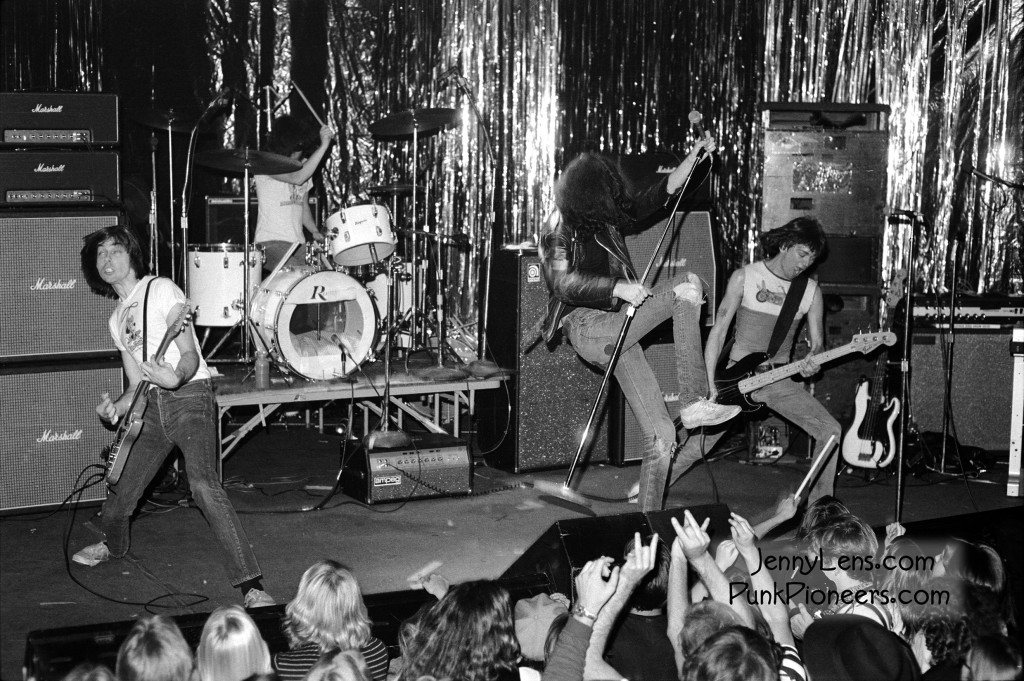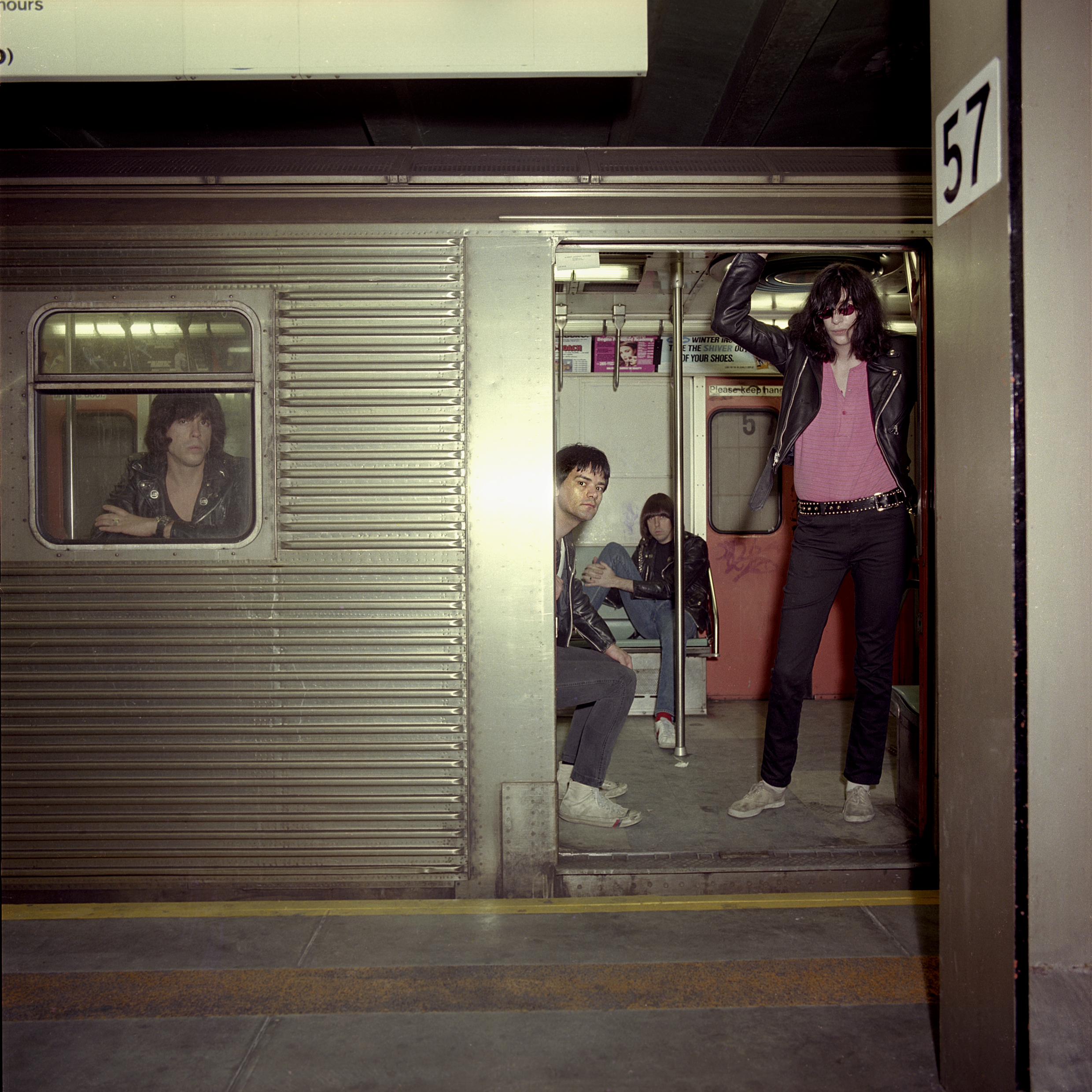review and interview by Jamila Campagna
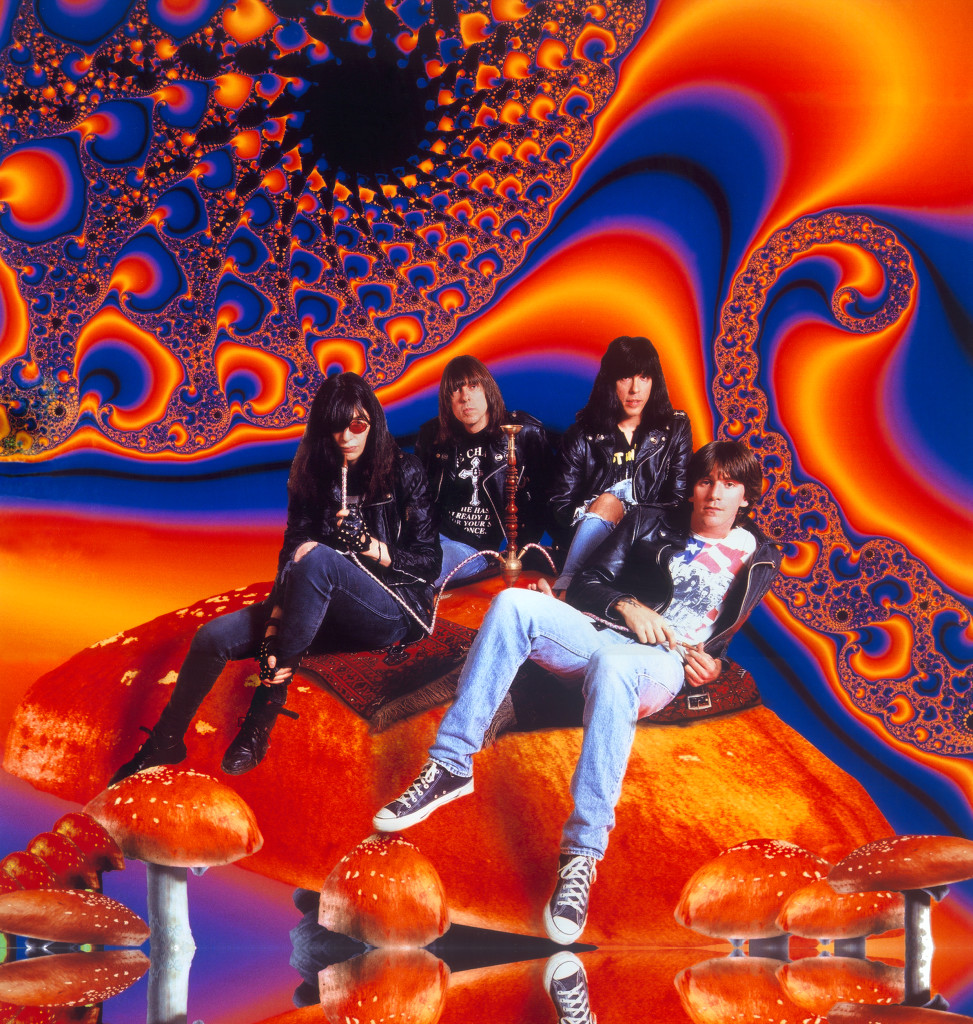
Tonight the Orion Club in Rome will host the event 40 anni di Ramones – 40 anni di Punk to celebrate the 40th anniversary from the Ramones’ first album; a night about the band who brought Punk from the underground to mainstream being very inspirational for many young musicians, giving them the courage to jump on the stage with good vibes and no fear. Live performances of the main tribute bands, the most famous in Rome, The Romanes and The Romanez, will be followed by a video projection path about Punk – dedicated to the Ramones but also to Dead Boys, The Clash, The Damned, Sex Pistols, The Stranglers, and other punk bands – and then by a dj set that will go on all night long with guest from the music world.
Guest star of the event is George DuBose, the Ramones official photographer, which brings ALL RAMONES POP UP PHOTOGRPHY EXHIBITION in Rome at the Orion Club. Seventy photos will tell the story of Ramones, accross their live performances, album covers and candids: George DuBose collected an incredible archive that includes not only the pictures taken by himself but also a kaleidoscopic selection of images realized by photographer as Bob Gruen, Jenny Lens, Mick Rock, Roberta Bayley, documents of the bands since the early performances. There’s a detail that makes this exhibition even more punk: photos will be displayed on he Orion walls and the fans could “liberate” them at the end of the gigs and bring the prints home!
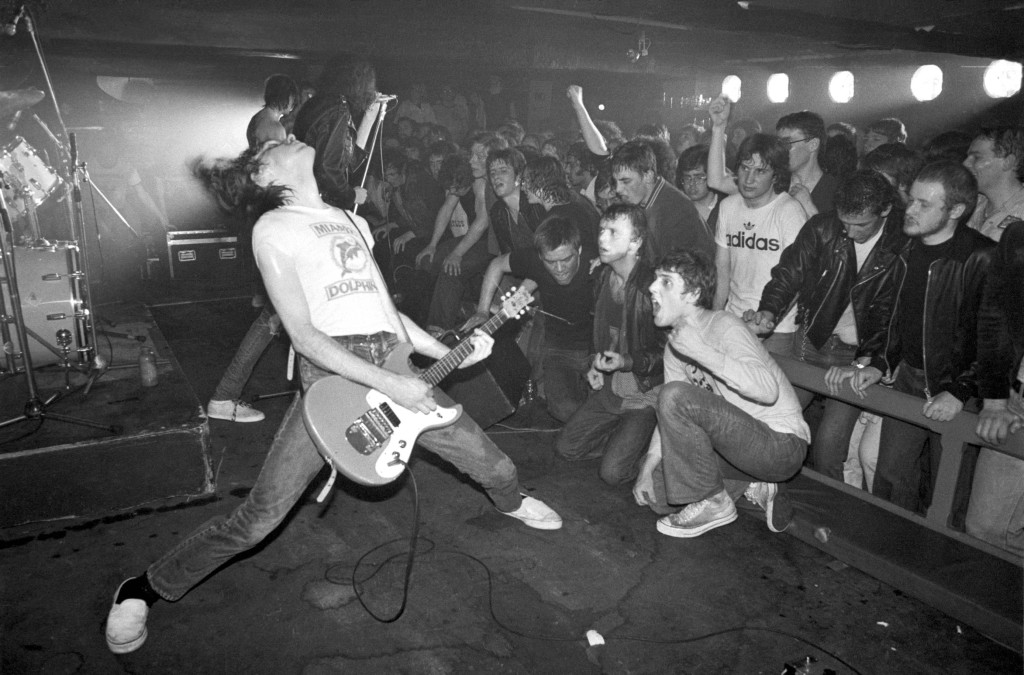
The event is upcoming and we had the chance to make an interview with George DuBose, finding ourselves in a precious conversation full of that kind of backstage fascination. His stories – very motivational – gave us an original point of view on the music scene, the prismatic gaze of a photographer which actually is an artist of the image that created a bridge between different arts during is whole career.
1 – Would you like to tell us how did your photographic career start through the Rock, Punk and New Wave scene in New York?
I moved to Manhattan to learn the business of photography. I originally wanted to be a portrtait photographer like Phillipe Halsman or Yousef Karsch of Ottawa, Canada. It took me some time to find a job as an assistant photographer, but eventually, I wound up working for two photographers, who let me use the studio and all their equipment after work hours.
I began going to a jazz club in Brooklyn and photographing the jazz musicians that played there. I would give the club a large print to display on the walls of the club for every artist that they let me photograph.
I was also doing free work for Andy Warhol’s magazine, Interview. The magazine’s assistant art director was my pal and he got me the job of photographing young models wearing the various t-shirts that Andy was selling.
One day I got a phone call from my friend at Interview. He asked me if I wanted to go to Max’s Kansas City, a famous music bar/restaurant and musician hangout to see a band from Georgia perform. I told my friend that I didn’t have any money, but he told me that I would be on the guest list. What’s a guest list?, I asked.
He told me that I could get in for free. The band was from Athens, Georgia, the first song that they played that night was Planet Claire and the music in that song was a direct copy of The Peter Gunn Theme from a 50’s detective TV show. It was the first song that I ever learned how to play on a guitar. I couldn’t tune the guitar, but I could play the Peter Gunn theme on one string.
I fell in love with the B-52’s. I asked them to come to my bosses’ studio so I could photograph them for Interview magazine. One of the girls in the band wasn’t there, so I asked the female manager to stand in her place. No one knew what the band looked like anyway. Later, I got the correct lineup in the studio and made some photos, one of which I used for a poster that I would tape to buildings around the venues where the band was performing. Eventually, that photo became their and my first album cover.
2 – You made a huge work experience in 30 years of career. Can you point out the main differences between your work as a freelance and the projects realized for Island Records and for SPIN magazine?
I began my career in NYC working in a printing company. I learned the archaic art of pasting up mechanicals, preparing designs for printing advertisements or other printed pieces. After my five year long apprenticeship, I did more album cover shootings for Island Records, the B52s first record label.
Tony Wright was the art director of the New York office of Island Records and he asked me if I would set up an art department and hire some designers. This broadened the work I was doing. Now, not only did I meet with the artists to discuss concepts for their covers, I shot the covers and then did the final designs. I was a one-stop shop for album covers.
When I was working for Island, part of my “deal” was that I got to create album packaging for other bands on other labels as long as I did that work after 18:00. So my freelancing for Cold Chillin’, an early Hip-Hop label, was done after my work at Island.
Before I started the art department for Island, I was the photo editor for the Image Bank, an early stock house. They hired me to look at their photo archives and select photos for coffee table books that they wanted to publish. I would look at their photographers collections of photos from China and choose photos for a book on China, we did books on Alaska, Hawaii, golf courses, whatever that Image Bank had images of in their archives.
Then I became the first art director of SPIN magazine, started by Bob Guccione Jr. (in 1985, e.n.). This was all before computers were used in design and to be honest, a magazine was a bit too much for me to handle, so I volunteered to become the photo editor.
I made every Wednesday the day that photographers wanting to work for SPIN could come and show me their books. I wouldn’t just let them “drop off” their portfolios…They had to show me their photos. I would often discuss how to make their photos more interesting to magazines, some young photographers would show me prints with dust marks. I would ask them Who is going to retouch that photo??? Not me!
Often I would look at a photographer’s style and then assign them a project that I knew they could do, but it might be a bit outside their style. I liked to push them out of their comfort zone.
I didn’t do much photography for SPIN. Mostly, I allowed them to publish photos I already had. There were occasions where I did shootings, especially if I had special connections to the band, as the case was with ZZ Top and REM.
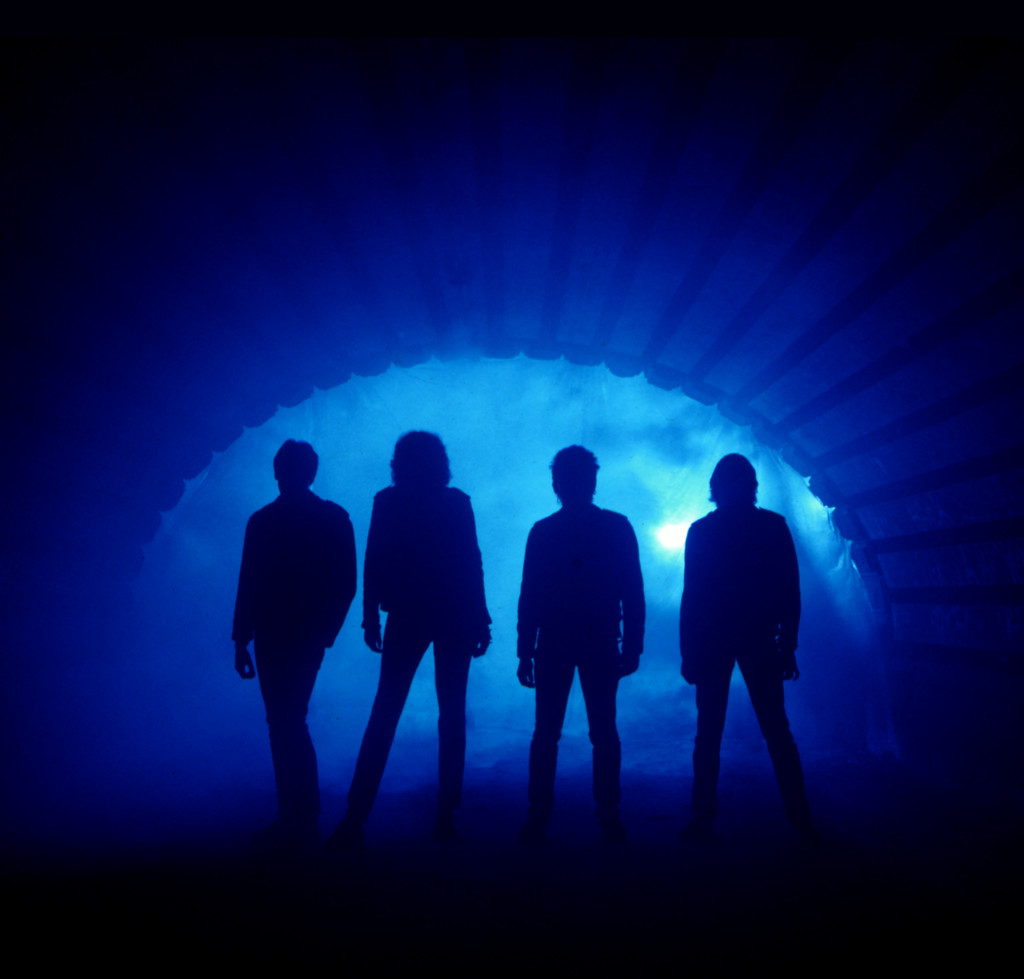
3 – How much is photography important in creating and defining the iconic essence of a band in the collective imagination?
Back in the days of vinyl, the covers would show a good likeness of the artist, some “taste” of the artists’ lifestyle. A fan would get more of a feeling of where that artist was coming from by looking at the cover and listening to the music. When vinyl “died”, I consoled myself with the thought that… well, a cd booklet can be 24 pages! That is a lot of photos of the artist. The photographer/art director can really tell a story about the artist or band with 24 photos.
Today, bands don’t think about concepts for their covers. After all, in many cases, their covers are reduced to 25mm x 25mm image that people can see with iTunes on their smart phones. Sometimes there is no physical package or product. Just digital.
Also, kids today often have never heard a vinyl recording. All they know is MP3s. If you compare the sound of an MP3 and a vinyl platter, well there just isn’t a comparison to the quality and range that the vinyl captures.
4 – You realized many covers for Ramones’ albums and followed the band for several years as their official photographer. Your photos contributed to create that undeground powerful attitude which is the soul of the band, that kind of energy that still reaches us nowdays and made the Ramones contemporary and unforgetable at the same time. Would you tell us about your work with them?
Let’s start from Tony Wright, Island Records art director, also freelanced. He had designed the first B-52’s album with my photo. He gave me the chance to shoot Lydia Lunch, Kid Creole and the Coconuts and other bands. The manager of the B-52’s also was the manager of the Ramones. Tony got the job to create a cover for Subterranean Jungle and hired me as the photographer. That’s a long story that is detailed in my Ramones photo book.
The next year, Johnny Ramone called me and asked me if I would shoot another cover for them, but did I know another art director besides Tony? “What was wrong with Tony?“, I asked.
“The graffiti on the cover of the subway car that was used for the cover of Subterranean Jungle looked fake“, Johnny said.
I told him to give Tony another chance, I said that Tony would have done what the band wanted. So Tony and I created the cover for Too Tough To Die, one of the most iconic Ramones covers.
The next year, Johnny called me and asked if I would do yet another cover. This time he said that they wanted handwriting on the cover. Hmmm. Tony gave me my first Ramones cover, then I gave Tony the chance to work on Too Tough To Die, so, in my mind, I paid Tony back for his giving me the cover of Subterranean Jungle, and so I would just do the cover of Animal Boy all by myself.
The more I worked with the Ramones, the more our concepts for their covers came together. I could realize their ideas and they like my ideas. This combined with the fact that the Ramones hated photoshootings – at least Johnny did – and the fact that I would shoot quickly, not fiddling around with the lighting for ages. Sometimes I would set up five different backgrounds in the studio and, within two hours, the band would have all the press photos that they needed for the coming album project’s publicity.
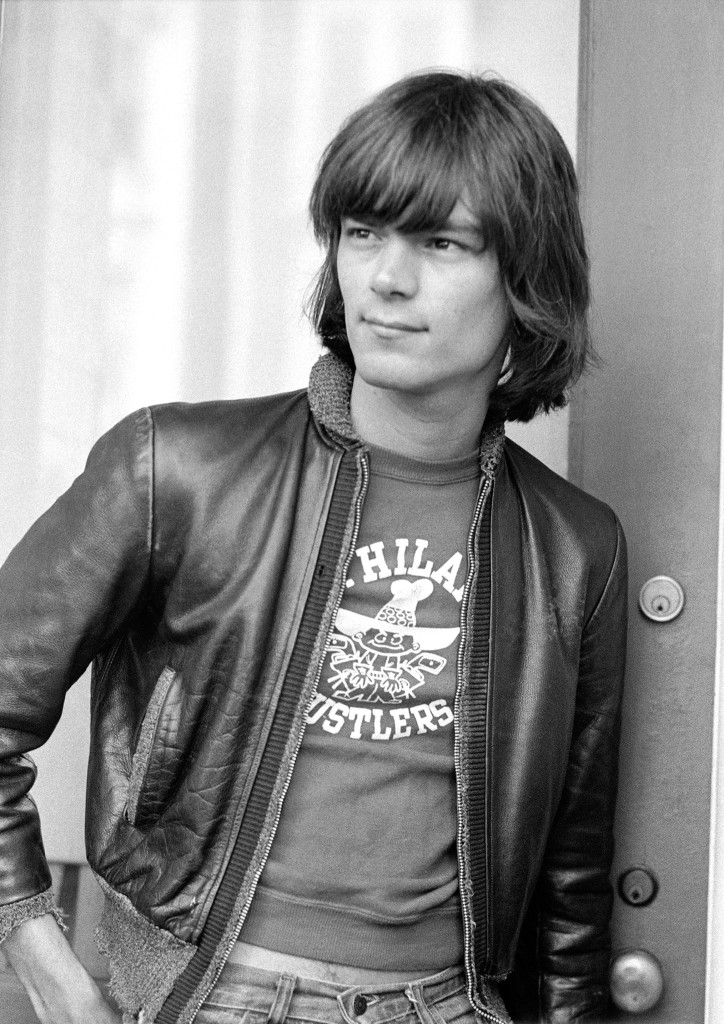
5 – This year is the 40th anniversary from the release of The Ramones’ first record and you organized and cured a traveling exhibition, 2016 All-Ramones Pop Up Photography Exhibition, which will be presented at the Orion Club in Rome this saturday. What’s the concept behind the exhibition?
Two years ago, Jörg Büscher, organized a benefit to raise money to fight cancer. The event was called Beat on Cancer. There were several Ramones tribute bands at this show in Düsseldorf. I made a photography exhibition with forty of my Ramones prints in A2 format with torn edges and taped the prints to the walls of the venue.
In the middle of the event, I noticed that several photos were missing from the walls! I went to the security man and asked “Who is stealing my photos?“. “Keine Ahnung!“, No idea!
So in the spirit of Abbie Hoffman’s Steal This Book – a book written in the hippy period of the 60s – I decided if you can’t beat ‘em, join ‘em. I collected six images from many of the photographers that worked with the Ramones since the beginning. So now I have seventy images printed on cheap paper with non-archival inks, I tear the edges of the prints and then tape the prints to the walls of the venue.
The idea is to show the story of the Ramones to their young fans that maybe have the t-shirt, a few CDs, but never saw the band in concert and never saw some of the photos that are on exhibit. They’re allowed to liberate and take away the prints from the walls. I wouldn’t be able to stop them from stealing the prints anyway…
6 – Your photographic book about Ramones is entitled I Speak Music – Ramones; “speaking music” suggests the idea of music as a language and it’s also very interesting the subtended synesthesia between music and photography. Do you think images are more true than words when you have to talk about music?
To me, “I Speak Music” means that I understand different styles of music and always relate to the artist and their music. When I begin a packaging project, I always must listen to the music and have a face-to-face with the artist. I don’t design covers for myself. The covers aren’t for me, they are for the musicians.
My job or goal is to make the cover look like the music inside sounds. The style of the cover has to fit the music inside. I want the potential buyer of this music to pick up the cover because it looks cool and connected to the material inside. Once you have a customer holding your package, you are halfway to having them buy it… And the right photograph will tell a thousand words about the music and the musician.
Cover image: The Ramones – Subterranean Jungle ©George-DuBose.com
